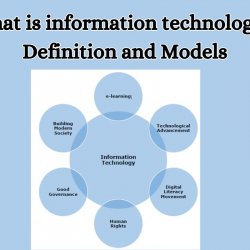5 Key Elements of Hyper Automation You Need to Know About

 Introduction to Hyper Automation
Introduction to Hyper Automation
Welcome to the world of hyper automation! If you’re intrigued by the term but not quite sure what it means or how it can benefit your business, you’ve come to the right place. In this blog section, we’ll walk you through the basics of hyper automation and break down its five key elements that you need to know about.
First things first, what exactly is hyper automation? It is a term that has gained a lot of buzz in recent years, especially in the tech industry. Put simply, hyper automation refers to the use of advanced technologies such as artificial intelligence (AI), machine learning (ML), robotic process automation (RPA), and more to automate and optimize complex business processes. Unlike traditional automation, which focuses on automating repetitive tasks, hyper automation aims to streamline entire workflows by combining multiple automation technologies.
So why combine multiple technologies when one may suffice? Here’s where our first key element comes into play: efficiency. By utilizing various automation tools, hyper automation allows businesses to achieve maximum efficiency in their operations. For instance, RPA can handle routine tasks that involve data entry and processing at lightning speed while AI algorithms can analyze large datasets and make accurate predictions. The integration of these technologies enables a seamless flow of work resulting in increased speed and accuracy.
Another essential element of hyper automation is the ability to handle both structured and unstructured data. Unlike traditional automation that relies on structured data like spreadsheets or databases, hyper automation can process unstructured data such as emails, images, documents, etc., thanks to its AI capabilities. This opens doors for businesses to automate tasks that were previously thought impossible.
Understanding the Concept of Hyper Automation
Hyper Automation is a buzzword that has been gaining a lot of traction in the tech world. But what exactly does it mean and how does it differ from traditional automation? In this blog section, we will dive deep into the concept of hyper automation and explore its key elements.
First things first, let’s define hyper automation. Simply put, it is the combination of multiple technologies to automate various tasks, processes, and workflows. This includes not just software tools but also hardware and other technology driven solutions. Unlike traditional automation which focuses on automating repetitive tasks, hyper automation aims to streamline complex processes by using a wide range of advanced technologies.
One of the biggest advantages of hyper automation is its ability to increase efficiency and productivity. By integrating multiple technologies and automating various aspects of operations, businesses can reduce manual errors and speed up their processes. This leads to increased output, better utilization of resources, and ultimately, higher profits.
Key Elements of Hyper Automation
- Robotic Process Automation (RPA):
- Task Automation: RPA involves the use of software robots or “bots” to automate rule-based, repetitive tasks. These bots can mimic human interactions with digital systems and perform tasks such as data entry, form processing, and routine calculations.
- Artificial Intelligence (AI) and Machine Learning (ML):
- Cognitive Automation: AI and ML technologies enable systems to learn from data and make intelligent decisions. In hyper automation, these technologies are applied to automate complex, non-routine tasks that require cognitive abilities, such as natural language processing, image recognition, and pattern analysis.
- Process Discovery and Mining:
- Analysis of Business Processes: Hyper Automation involves the use of process discovery tools to analyze and understand existing business processes. Process mining helps identify inefficiencies, bottlenecks, and areas for improvement.
- Process Orchestration:
- Coordination of Workflows: Process orchestration involves coordinating and managing end-to-end workflows that may span multiple systems, applications, and departments. This ensures smooth collaboration between automated processes and human tasks.
- Low-Code and No-Code Development:
- User-Friendly Automation: Hyper Automation often involves the use of low-code or no-code development platforms that allow users with varying technical skills to create and modify automated processes. This democratizes the automation process and accelerates development.
Benefits of Implementing Hyper Automation
- Increased Efficiency:
Streamlined Processes: Hyper Automation enables organizations to automate repetitive and time-consuming tasks, leading to increased operational efficiency. This allows employees to focus on more strategic matters.
- Cost Savings:
Resource Optimization: Automation of routine tasks and processes leads to resource optimization, reducing the need for manual intervention. This can result in significant cost savings by improving productivity and minimizing errors.
- Improved Accuracy:
Reduction in Errors: Automation reduces the likelihood of human errors in routine tasks, leading to more accurate and reliable outcomes. This is particularly important in data entry, document processing, and other error-prone activities.
- Enhanced Customer Experience:
Faster Response Times: Hyper Automation enables organizations to respond to customer queries and requests more quickly. Automated processes ensure timely and accurate interactions, contributing to an improved customer experience.
- Business Agility:
Adaptability to Change: Hyper Automation allows organizations to quickly adapt to changes in the business environment. Automated processes can be modified and scaled easily to accommodate evolving business requirements.
Challenges in Adopting Hyper Automation
- Complexity of Integration:
Interconnected Systems: Many organizations have existing legacy systems and a diverse technology landscape. Integrating automation tools and technologies with these systems can be complex and require careful planning to ensure seamless communication between different components.
- Change Management:
Organizational Resistance: Employees may be resistant to change, particularly if their roles are significantly impacted by automation. Addressing concerns, providing training, and fostering a culture of adaptability are crucial for successful adoption.
- Skill Gaps:
Lack of Technical Expertise: Implementing and managing hyper automation solutions may require new skills that may not be readily available within the organization. Bridging skill gaps through training or hiring is essential for successful adoption.
- Data Quality and Governance:
Data Challenges: Hyper Automation relies heavily on accurate and high-quality data. Inconsistent data, data silos, and poor data governance can hinder the effectiveness of automation processes and lead to errors.
- Security Concerns:
Cybersecurity Risks: The increased connectivity and automation of processes may introduce new cybersecurity risks. Protecting sensitive data and ensuring the security of automated systems become critical considerations.
You can also read:
hero vired data science course reviews






Ingen kommentarer endnu